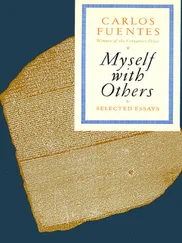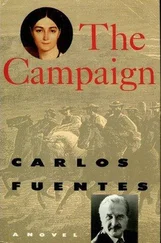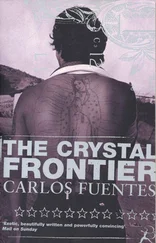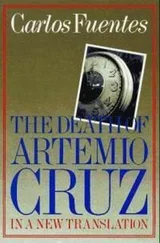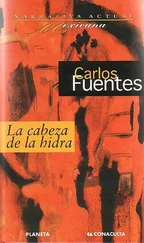Juan Francisco was delighted to have an attentive audience, his own son, for whom he could rehearse those heroic stories of the Mexican workers movement, culminating in the textile strike at Rio Blanco in 1907, where Don Porfirio’s Finance Minister, Yves Limantour, supported the French owners and planned to prohibit uncensored books, require passports to enter and leave the factory, as if it were a foreign country, and note in company documents the rebellious history of each worker.
“Once again it was a woman, Margarita Romero by name, who led the march to the company store and set it on fire. The army came in and shot two hundred workers. The troops set up their garrison in Veracruz, and it was then that I came to organized the resistance.”
“What did you do before, Papa?”
“I think my story begins with the Revolution. Before that, I have no biography, my boy.”
He brought Danton to the offices of the CTM, to a cubicle where he received telephone calls, which always ended with his saying “yes, sir,” “just as you say,” and “an order is an order, sir,” before he went off to Congress to communicate to the labor deputies the orders of the President and Secretary of State.
That’s how he spent the day. But en route from the union offices to the Chamber and then back, Danton saw a world he didn’t like. It all seemed a circus of complicities, a minuet of agreements dictated from above by the real powers and repeated below mechanically in Congress and the unions, without argument or doubt but in an interminable circle of hugs, pats on the back, secrets whispered into ears, envelopes with official seals, occasional bursts of laughter, vulgar horseplay that had the obvious purpose of salvaging the leaders’ and deputies’ ill-treated masculinity, constant dates for grand banquets that might end at midnight in the House of the Lady Bandit, winks of “you know what I mean” in matters of sex and money, and Juan Francisco circulating among all this.
“It’s orders …”
“It’s convenient …”
“Of course they’re communal lands, but the beachfront hotels will give jobs to the whole community …”
“The hospital, the school, the highway — these will all integrate your region better, Congressman, especially the highway, which will run right next to your property …”
“Well, yes, I do know it’s his lady’s whim, but let’s give in. What do we have to lose? The Secretary will be grateful to us for the rest of his life …”
“No, there’s an interest higher up that wants to stop this strike. It’s over, understand? Everything can be achieved through laws and conciliation, without fights. You have to realize, Mr. Congressman, that the government’s raison d’être is to ensure stability and social peace in Mexico. That, today, is what revolutionary means.”
“Yes, I know President Cárdenas promised you a cooperative, comrades. And we’re going to have it. The problem is that the requirements of production demand a strong leadership nationally linked to the CTM and the Party of the Mexican Revolution. If we don’t have that, comrades, we’ll be swallowed up by priests and landowners, as always.”
“Have faith.”
Wasn’t he going to request a sightly more elegant office?
No, Juan Francisco told Danton, a spot like this is appropriate for me, modest, and better to work from. This way I don’t offend anyone.
But I thought you made money to show off.
Then you should work as a contractor or a businessman. Those people can do what they like.
Why?
Because they create jobs. That’s the formula.
And you?
We all have to play the role assigned us. That’s the law of the world. Which do you like, son: businessman, newspaperman, soldier …?
None of those, Papa.
Well, what do you want to do?
Whatever I have to.
16. Chapultepec-Polanco: 1947
THE INAUGURATION of President Miguel Alemán in December 1946 coincided with an astonishing event in the Avenida Sonora household. Aunt María de la O started speaking again. “He’s from Veracruz, a jarocho,” she said — of the new, young, elegant head of state, the first civilian President, after a series of military men.
Everyone — Laura D  az, Juan Francisco, Santiago, Danton — was taken aback, but Aunt María’s surprises didn’t stop there: for no reason at all, she started dancing la bamba at all hours of the day or night, her swollen ankles notwithstanding.
az, Juan Francisco, Santiago, Danton — was taken aback, but Aunt María’s surprises didn’t stop there: for no reason at all, she started dancing la bamba at all hours of the day or night, her swollen ankles notwithstanding.
“No fool like an old fool,” said a scornful Danton.
Then, at the beginning of the new year, María de la O made her sensational announcement: “The time of sadness is over. I’m going back to live in Veracruz. An old beau of mine from the port has asked me to marry him. He’s my age, though I don’t know exactly what my age is, because Mama never registered me. She wanted me to grow up quickly and follow her in the crazy life. Silly cunt, I hope she’s sizzling in hell. All I know is that Matías Matadamas — that’s my boyfriend — can dance the danzón like an angel, and he’s promised to take me dancing twice a week in the city square, right along with everyone else.”
“Nobody’s named Matías Matadamas,” said Danton the wet blanket.
“You little snot,” replied Auntie. “For your information, St. Matías was the last apostle, the one who took the place of Judas the Traitor after the crucifixion so there would be an even dozen.”
“Apostle and boyfriend all at the last minute!” Danton laughed. “As if Jesus Christ were a peddler who sold saints cheaper by the dozen.”
“Just you wait and see if the last minute isn’t sometimes the first, you disbeliever.” María de la O was berating him, but truth to tell, she was not in the mood for reproofs. What she wanted was to be dancing bulerías. “I can just see myself, holding on to him tight,” she went on with her best daydream air, “cheek to cheek, dancing on a brick, which is how you should dance the danzón, barely moving your body, just your feet, your feet tapping out the beat, slow, delicious, sexy. Oh boy, family, I am going to live!”
Nobody could explain Aunt María de la O’s miracle; nobody could thwart her will or even take her to the train, much less to Veracruz.
“He’s my boyfriend. He’s my life. My time has come. I’m tired of being a parasite. From now to the grave, pure Caribbean fun and nights on the town. A little old lady died shuffling cards. To hell with that! Not me!”
With those words, a not unusual proof that the tongues of the old loosen up when there’s nothing to lose, she boarded the Interoceanic train almost with relief, a renewed woman, a miracle.
Even though Auntie’s chair was empty, Laura Díaz insisted on continuing the afternoon ceremony of sitting at the balcony and observing the to-and-fro of the city. It had changed little between the inauguration of General Avila Camacho and that of Mr. Alemán. During the war, Mexico had become a Latin American Lisbon (Casablanca with nopales , quipped Orlando), a refuge for the many men and women fleeing from the European conflict. Two hundred thousand Spanish Republicans came, and Laura told herself that Jorge Maura’s labors had not been in vain. The cream of the Spanish intelligentsia arrived, a terrible bloodletting for the contemptible Franco dictatorship but a magnificent transfusion for Mexico’s university life, literature, art, and science. In exchange for shelter, the Spanish Republicans renovated Mexico’s culture — a wonderful example of the universalism that saves cultures from nationalist viruses.
In a small apartment on Lerma Street, the great poet Emilio Prados, with his blind man’s glasses and his tangled, graying mane, lived modestly. Prados had already foreseen the “flight” and “arrival” in his beautiful poems about the “persecuted body,” which Laura memorized and recited to Santiago. The poet wanted to flee, he said, “tired of hiding in the branches … tired of this wound. There are limits.” As Laura recited, she heard the voice of Jorge Maura reaching her from far off, as if poetry were the only form of true actuality allowed by the eternal God to His poor mortal creatures. Prados, Jorge Maura, Laura D  az, and perhaps Santiago López-Díaz as he listened to her read the poems — they all wanted to arrive “with my rigid body … that flows like a river without water, walking on foot through a dream with five sharp flames nailed to my chest.”
az, and perhaps Santiago López-Díaz as he listened to her read the poems — they all wanted to arrive “with my rigid body … that flows like a river without water, walking on foot through a dream with five sharp flames nailed to my chest.”
Читать дальше
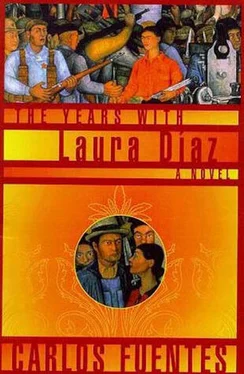
 az, Juan Francisco, Santiago, Danton — was taken aback, but Aunt María’s surprises didn’t stop there: for no reason at all, she started dancing la bamba at all hours of the day or night, her swollen ankles notwithstanding.
az, Juan Francisco, Santiago, Danton — was taken aback, but Aunt María’s surprises didn’t stop there: for no reason at all, she started dancing la bamba at all hours of the day or night, her swollen ankles notwithstanding.
